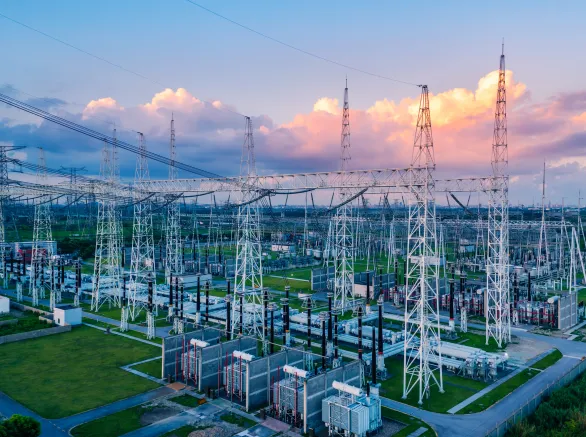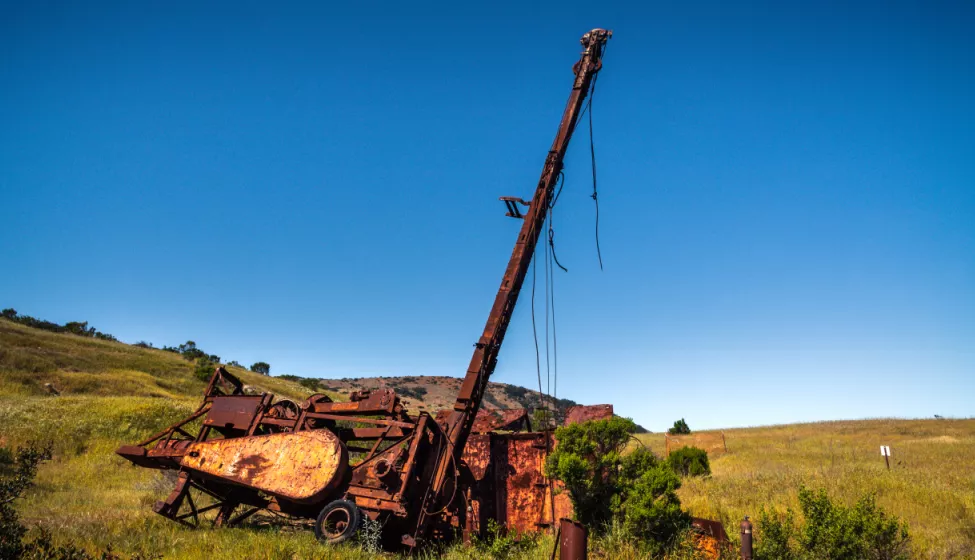December 2, 2021
The magnitude of a largely unnoticed problem: the nation's abandoned and orphan oil and gas wells
Texas, Pennsylvania, Louisiana, West Virginia, California, and other states may have a big problem, and we likely don't yet know how big the problem is.
Orphan wells are abandoned oil or gas wells that are no longer in use or active and which may or may not have a known owner. There are various types of orphan wells, such as abandoned wells with no owner of record (some drilled over a 100 years ago) or abandoned wells with an owner who has ostensibly sold the responsibility for that well to someone else.
Idle wells, on the other hand, are wells whose owners choose to cease operations because they are no longer producing viable amounts of oil or natural gas, but they may be economically viable if stimulated in the future. There are hundreds of thousands of these wells (perhaps millions) across the country. Even more concerning, an untold number of these wells have yet to be counted and identified.
Because the vast majority of these wells may not have been properly abandoned to prevent methane and carbon dioxide leaks, it has been estimated that 3.5 trillion cubic feet of these greenhouse gases are leaking into the planet's atmosphere annually from the U.S. alone. There has been about a 9% increase in global methane emissions between the early 2000s and 2017, and discharges have not let up since. Couple potential claims of climate damages with potential claims of local damages from blowouts of improperly abandoned wells, and oil and gas companies could face substantial legal liability.
In fact, President Biden signed an Executive Order 14008 on January 27, 2021, which included measures to decrease greenhouse gas emissions from oil and gas wells, including methane and carbon dioxide. President Biden then announced on November 2, 2021, at the United Nations Climate Change Conference in Glasgow, Scotland, that the Department of the Interior (DOI) "will launch and aggressive program to plug hundreds of thousands of orphan oil and gas wells, including many that are still venting methane, employing union workers across the country."
Hundreds of thousands of orphan wells
A July 2021 Journal of Petroleum Technology article reported that, according to the U.S. Environmental Protection Agency, there are an estimated "3.4 million old crude and gas wells in various states of abandonment across the US, an almost 20% increase in the past decade." Moreover, the article reported, "the wells are spewing about 7 million metric tons of methane into the atmosphere every year, although unplugged wells tend to be 100 times more polluting than their plugged brethren."
Orphan wells were sometimes not abandoned because there was an expectation that they still had potential to produce hydrocarbons in the future (for example, through secondary stimulation or wellbore repair). Some state regulations in certain contexts refer to orphan wells as "idle wells," which may have had an identified operator, but the operator has gone out of business.
The Interstate Oil and Gas Compact Commission (IOGCC) reported in 2018 that there were approximately 56,600 documented orphan wells and 194,400 approved idle wells out of a total of 1.6 million unplugged wells throughout the U.S. The IOCGG also reported that as of 2018 over 63,000 orphan wells had been plugged and abandoned in programs run by hydrocarbon-producing states. California, for example, has such a program for dealing with identifying idle and orphan wells and abandoning them where necessary and achievable.
Abandoned well blowouts
In addition to potential climate impacts from greenhouse gas emissions, there is also the potential for blowouts from poorly abandoned and orphan wells. Two notable examples of such blowouts occurred in 2012 in Tioga County, Pennsylvania, and 2019 in Marina del Rey, California.
In the 2012 incident, drilling a new well is thought to have caused a pocket of natural gas to blow out of an 80-year-old improperly abandoned well. The old well was known to have had gas kicks and drilling tools blown out of the well when it was originally drilled. The older well was re-abandoned by the operator of the newer well. Many older wells such as this have been found to have been poorly abandoned, sometimes simply with logs, boards, or rocks dumped into the well.
The 2019 Marina Del Ray incident occurred while a nearby hotel was under construction. During re-abandonment of the well, a blowout occurred, which blew natural gas and fluids 100 feet into the air. Though it was quickly brought under control, California oil and gas regulators required an analysis of the root cause of the blowout. The well was originally drilled in the 1930s and was previously abandoned twice in the 1950s. In the end, the well was abandoned again, for the third time, in 2019.
Not just a matter of closing the valve
When an operator ceases production from a well, it does not simply close the valve and walk away. Rather, the well must be properly abandoned in accordance with state and local oil and gas regulations and industry standards and practices. Most state regulatory requirements are based on the standard abandonment practices established in API Bul E3, Wellbore Plugging and Abandonment Practices.
Operators who fail to properly abandon wells may still be responsible for re-abandonment or the consequences of well failures and blowouts, even if they sell to another entity. All the liabilities with these orphan wells may follow the operator, because if wells are not abandoned properly, they may have to be re-abandoned due to potential safety risks. These represent serious liability issues for operators at substantial costs to remediate them.
Under current laws, fossil fuel companies are required to put up bonds to ensure that wells are properly abandoned and remediated if needed. These funds were required after thousands of companies went out of business without enough financial reserves to pay for this responsibility. In many cases, however, these bonds are not nearly enough to cover the cost of properly abandoning an entire field of wells or orphan wells with no traceable owner. According to a Los Angeles Times investigation, "bonds posted to the state by California's seven largest drillers, which account for more than 75% of oil and gas wells, amount to about $230, on average, for every well they must decommission."
Identifying and cataloguing orphan or poorly abandoned wells will be a huge undertaking requiring innovative strategies such as leveraging drone surveillance and satellite imagery. It will also require a lot of good old-fashioned detective work looking at over a hundred years of dusty old records to figure out who owns what and where.
How Exponent Can Help
Exponent engineers have provided clients with expertise in cases involving identification and evaluation of orphan wells, abandonment issues, and legacy oil and gas fields. Exponent has drone technology for field and incident inspections, including oil fields, explosion sites, pipeline inspections, and mine collapse investigations.
Insights



